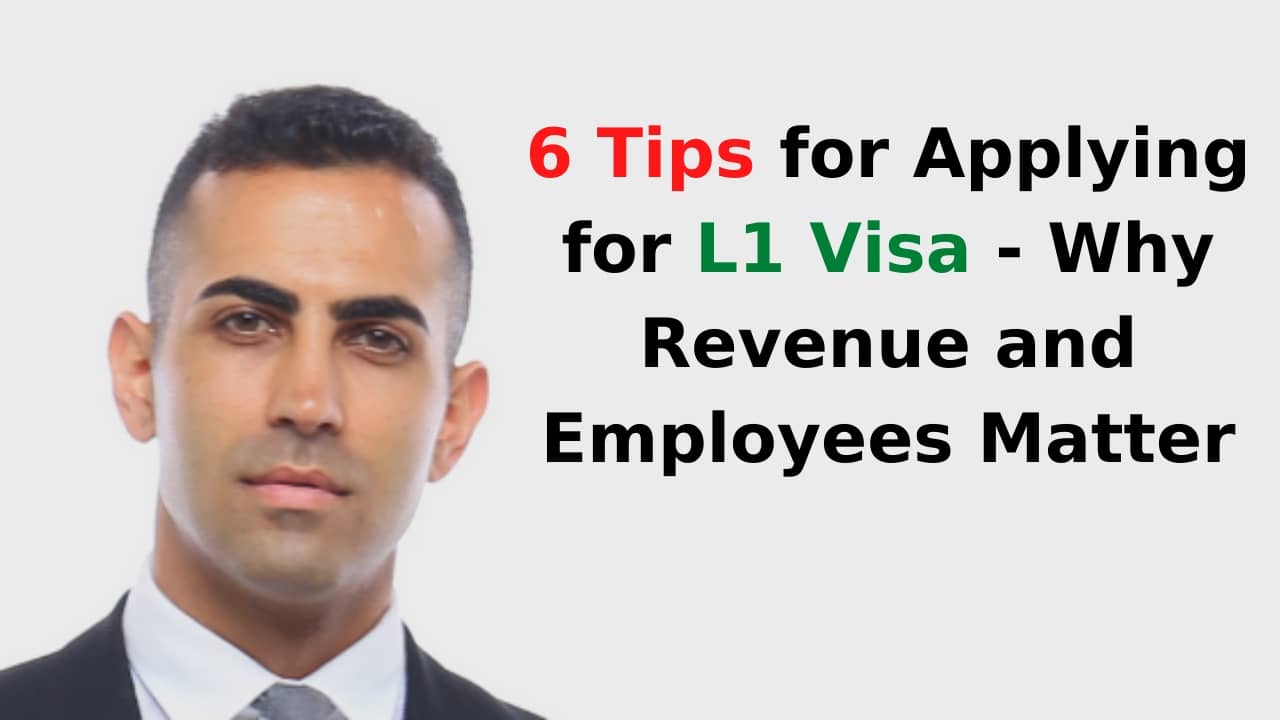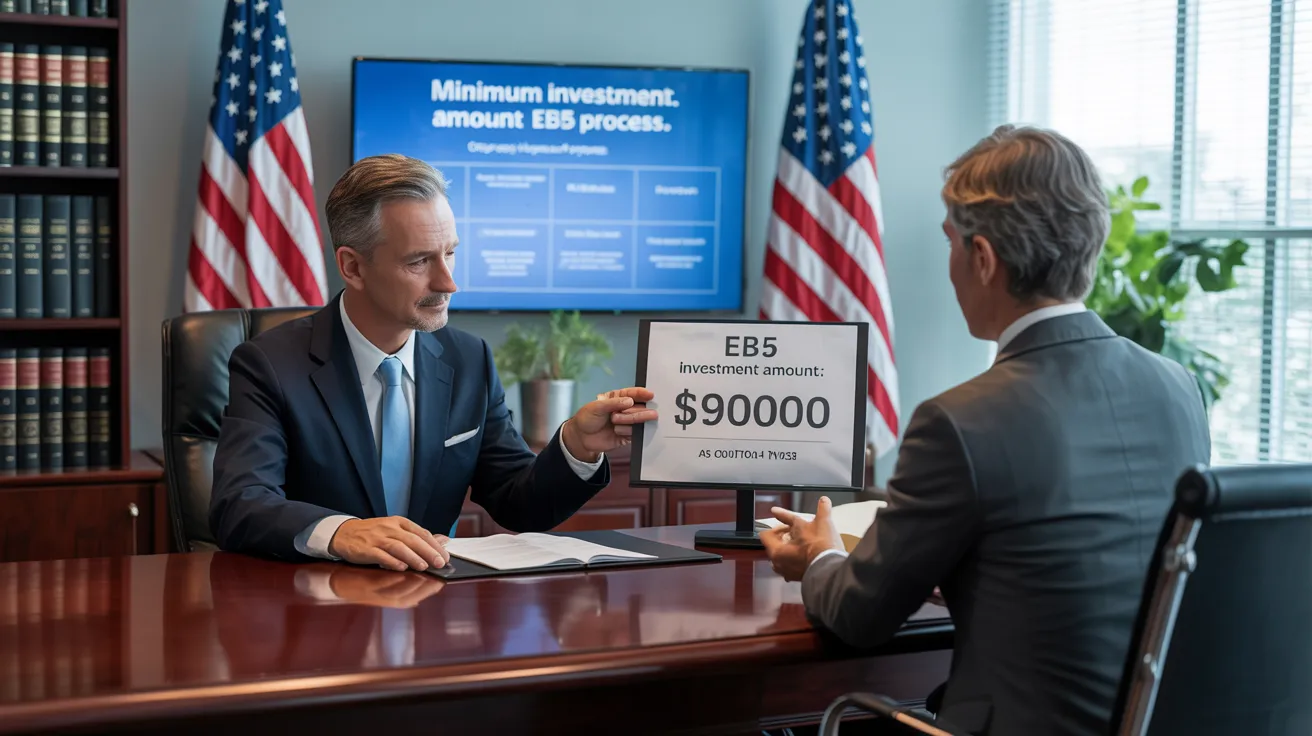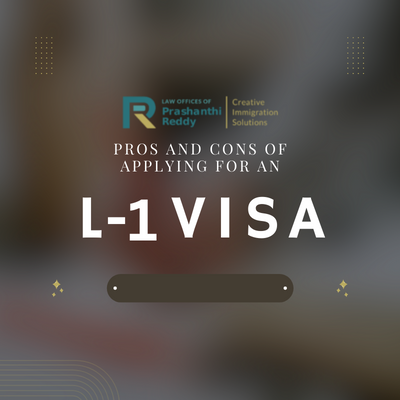Getting The L1 copyright Work
Table of ContentsThe L1 Visa IdeasSome Ideas on L1 Visa You Should KnowThe smart Trick of L1 Visa That Nobody is DiscussingThe 2-Minute Rule for L1 VisaL1 Visa Fundamentals ExplainedA Biased View of L1 Visa
Available from ProQuest Dissertations & Theses Worldwide; Social Scientific Research Premium Collection. (2074816399). (PDF). Congress. (PDF). DHS Workplace of the Examiner General. (PDF). (PDF). "Nonimmigrant Visa Statistics". Retrieved 2023-03-26. Department of Homeland Safety Office of the Inspector General, "Testimonial of Susceptabilities and Prospective Abuses of the L-1 Visa Program," "A Mainframe-Size Visa Loophole".
United State Department of State. Fetched 22 August 2016. "Employees paid $1.21 an hour to install Fremont technology company's computers". The Mercury Information. 2014-10-22. Recovered 2023-02-08. Costa, Daniel (November 11, 2014). "Obscure temporary visas for foreign technology workers dispirit salaries". The Hillside. Tamen, Joan Fleischer (August 10, 2013). "Visa Holders Replace Workers".
The L1 Visa Ideas
In order to be qualified for the L-1 visa, the international firm abroad where the Beneficiary was employed and the U.S. company have to have a certifying partnership at the time of the transfer. The different kinds of qualifying relationships are: 1. Parent-Subsidiary: The Parent suggests a company, corporation, or other legal entity which has subsidiaries that it owns and regulates."Subsidiary" means a firm, company, or various other lawful entity of which a moms and dad owns, straight or indirectly, more than 50% of the entity, OR has much less than 50% but has administration control of the entity.
Instance 1: Company A is integrated in France and utilizes the Beneficiary. Company B is incorporated in the united state and intends to seek the Recipient. Business A possesses 100% of the shares of Firm B.Company A is the Parent and Business B is a subsidiary. There is a certifying connection between the two firms and Firm B must be able to sponsor the Recipient.
Business A possesses 40% of Firm B. The staying 60% is had and controlled by Business C, which has no relation to Firm A.Since Company A and B do not have a parent-subsidiary relationship, Company A can not fund the Recipient for L-1.
Instance 3: Company A is incorporated in the united state and wishes to request the Beneficiary. Company B is integrated in Indonesia and employs the Recipient. Company An owns 40% of Company B. The staying 60% is possessed by Business C, which has no relationship to Company A. Nevertheless, Business A, by formal contract, controls and complete manages Company B.Since Business An owns much less than 50% of Company B but manages and regulates the company, there is a certifying parent-subsidiary relationship and Firm A can fund the Beneficiary for L-1.
Excitement About L1 Visa
Affiliate: An affiliate is 1 of 2 subsidiaries thar are both possessed and managed by the exact same parent or person, or had and regulated by the exact same group of individuals, in generally the exact same ratios. a. Instance 1: Company A is incorporated in Ghana and employs the Recipient. Company B is included in the united state
Business C, also incorporated in Ghana, possesses 100% of Company A and 100% of Firm B.Therefore, Business A and Company B are "affiliates" or sister firms and a certifying relationship exists between both companies. Company B ought to have the ability to fund the Beneficiary. b. Example 2: Company A is included in the U.S.
Firm A is 60% owned by Mrs. Smith, 20% owned by Mr. Doe, and 20% owned by Ms. Brown. Company B is included in Colombia and currently utilizes the Beneficiary. Company B is 65% possessed by Mrs. Smith, 15% had by Mr. Doe, and 20% owned by Ms. Brown. Firm A and Company B are affiliates and have a qualifying relationship in 2 different methods: Mrs.
The L-1 visa is an employment-based visa group developed by Congress read more in 1970, permitting international business to transfer their supervisors, execs, or crucial employees to their United state operations. It is typically referred to as the L1 Visa process intracompany transferee visa.

Furthermore, the recipient needs to have operated in a managerial, exec, or specialized worker position for one year within the 3 years preceding the L-1A application in the international firm. For brand-new office applications, foreign work has to have remained in a supervisory or executive capacity if the recipient is coming to the USA to function as a supervisor or executive.
Getting The L1 copyright Work

If granted for a united state business operational for greater than one year, the preliminary L-1B visa is for as much as 3 years and can be prolonged for an additional two years (L1 Visa). On the other hand, if the U.S. company is newly established or has been operational for less than one year, the initial L-1B visa is issued for one year, with expansions available in two-year increments
The L-1 visa is an employment-based visa group established by Congress in 1970, allowing multinational business to transfer their supervisors, executives, or essential personnel to their united state operations. It is generally referred to as the intracompany transferee visa. There are two major types of L-1 visas: L-1A and L-1B. These kinds appropriate for employees worked with in different placements within a company.
Little Known Facts About L1 Visa.
In addition, the recipient has to have operated in a managerial, executive, or specialized staff member placement for one year within the 3 years coming before the L-1A application in the foreign company. For brand-new workplace applications, international work has to have remained in a supervisory or executive capacity if the beneficiary is involving the USA L1 Visa requirements to function as a manager or executive.
for as much as seven years to supervise the procedures of the U.S. affiliate as an exec or manager. If provided for an U.S. business that has been functional for more than one year, the L-1A visa is originally granted for up to three years and can be expanded in two-year increments.
If given for an U.S. business functional for more than one year, the initial L-1B visa is for up to three years and can be prolonged for an extra two years. On the other hand, if the U.S. business is freshly developed or has actually been operational for much less than one year, the preliminary L-1B visa is provided for one year, with expansions readily available in two-year increments.